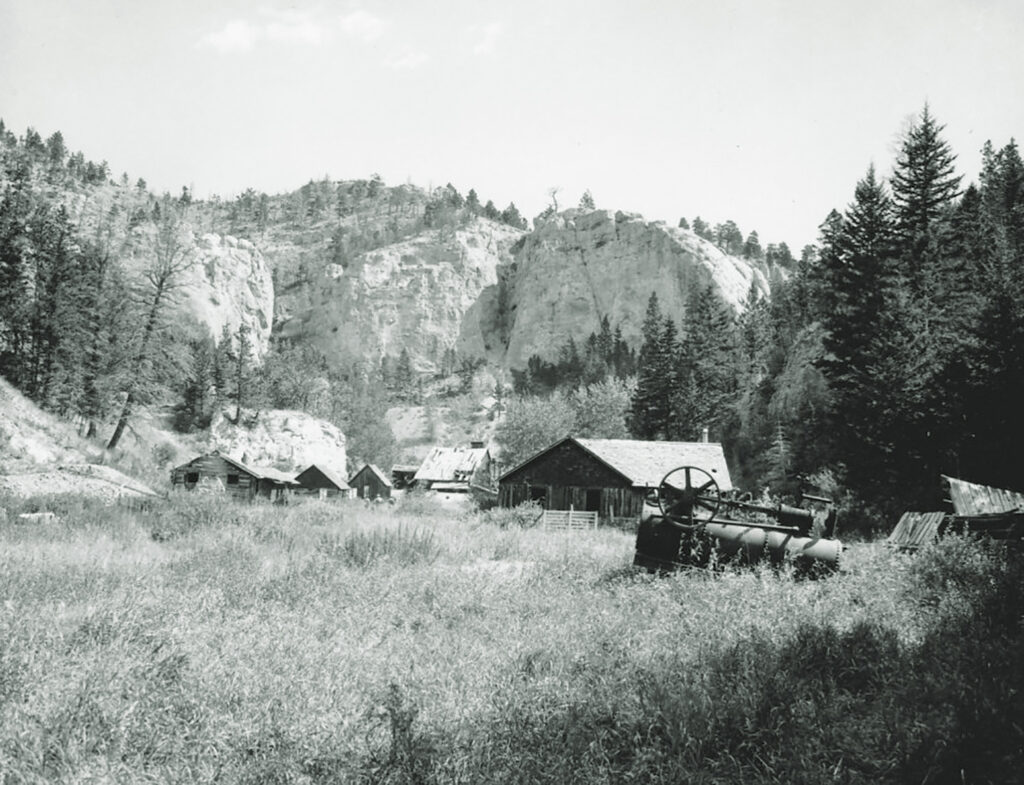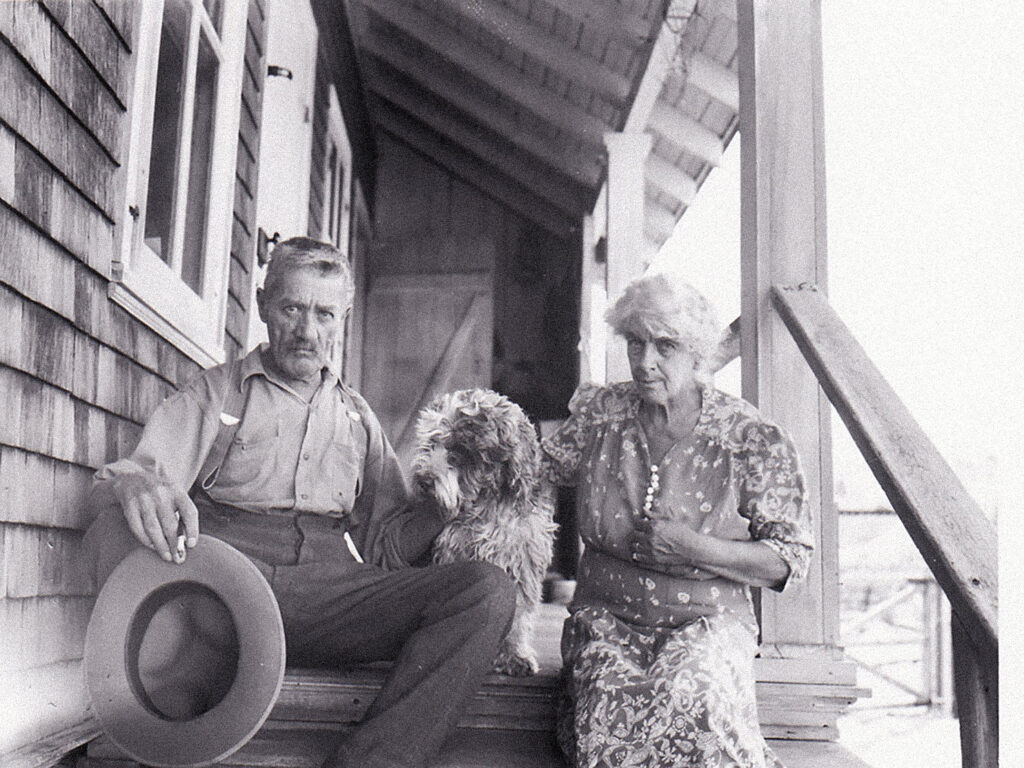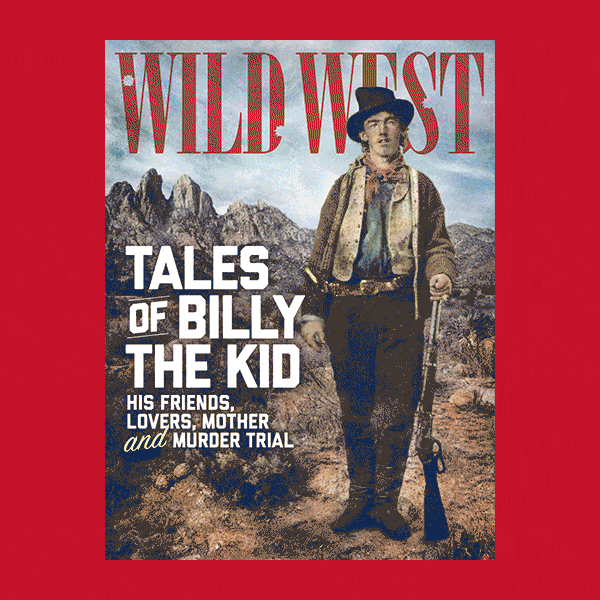Millie Ringold had little time for either tumultuous Reconstruction-era politics or Americans’ changing attitudes toward the assimilation of freed slaves into a predominantly white society. Born into slavery back East, she moved to the mining camp of Yogo City, Montana Territory, in the centennial year of 1876. Though initially the only black person and only woman in camp, she was too busy to give it much thought.
Ringold was born in Virginia in 1845. After emancipation, she moved to Washington, D.C., there working as a nurse and servant for Major Nelson B. Switzer of the 3rd U.S. Cavalry. In 1876 she came up the Missouri River with the major and his family by steamship to Fort Benton, Montana Territory. A year later, when then Lt. Col. Switzer received transfer orders, Millie elected to remain in the frontier town crowded with hopeful miners.
At the time ramshackle settlements were popping up all across the Montana frontier on the backs of one strike after another. In 1879, when word of a promising follow-up gold strike at Yogo Creek (in the Little Belt Mountains of present-day Judith Basin County) reached Fort Benton, Ringold bought two condemned Army mules, a wagon and a load of provisions (including a barrel of whiskey) and joined the rush.
In the rough town of Yogo City she opened a small hotel, restaurant and saloon. With the profits she made from that enterprise and such side ventures as taking in laundry, Millie bought and worked her own claims. The hardworking pioneer soon made her first hire, Abraham Carter, the only other black person listed in the 1900 census for the district. If racial slurs were leveled at either of them, witnesses kept their observations to themselves, for no surviving firsthand account reflects any such instance of discrimination.

(Montana State Library)
Growing especially fond of Millie, the miners gave her the sobriquet “Bonanza Queen of Yogo City.” When they gathered at her place, she cheered them by playing her favorite tunes on the mouth harp, hand saw, washboard, dishpan or whatever else was on hand. Her admirers said she could make more music with an empty 5-gallon oil can than others could with a piano. Among her favorite tunes were “Coming Through the Rye” and “Coal Oil Johnny” (a phonetic adaptation of a song from the postwar play Coal Oil Tommy, by John Brougham, with Ringold’s own ribald phrase “bum bum soiree”). While Millie entertained the miners with her music and singing, a greater source of wonderment was her double row of front teeth and two tusklike canines protruding from her lower jaw. They often begged her to open her mouth so they could gawk at the rare dental phenomenon.
Meanwhile, the gold seekers found only scattered nuggets amid shoals of pretty blue pebbles that continually jammed their sluice boxes. Slavishly gold-oriented, the men tossed the nuisance pebbles back into the creek. As the miners drifted away one by one, Millie bought up their claims, certain there remained a seam of gold only she would find. Little did she know, a fortune was washing downriver.
By 1899 a British syndicate, whose investors had discovered the “pretty blue pebbles” to be high-quality sapphires, had opened the English Mine along Yogo Creek (see “Bothersome Blue Pebbles,” by Chuck Lyons, in the February 2019 Wild West). Among those who came to oversee the sapphire mine was 25-year-old Englishman Charles T. Gadsden. Though he had neither the education nor prior experience for the job, he demonstrated unswerving loyalty and superb ability as a manager and was eventually promoted to resident supervisor. He and wife Maude made no friends, nor wanted any, until they met Ringold. When or how they met is unknown, but Charles came to admire Millie for her tough-as-a-bear brawn as she drove her wagon or worked her claims dressed in men’s overalls or skirts made from gunnysacks. Short and squat, she presented quite a sight when driving, perched on the edge of the wagon seat, her feet dangling well above the foot of the driver’s box. On one occasion she drove the wagon straight across an icy river, shouting to her mules “Ho! Go long! Git in da. Pull ’em out!” Witnesses were in awe.

(Montana State Library)
One old-time resident recalled visiting Ringold at home in her Yogo City hotel a few years before her death. “A smile of welcome at once puckered her black face into countless wrinkles and bared two tusklike teeth that pointed upward and kept her mouth from closing,” the friend recalled. “Her eyes were very dark and had a knowing twinkle in their liquid depths.” When Millie became too crippled by age and rheumatism to work her claims or drive her team, she eked out a living taking in washing and raising poultry. On his own initiative, Gadsden had the mine’s wagon and team haul supplies to Millie at no cost.
In December 1906 a visitor found Ringold gravely ill, and the county auditor summoned a doctor from nearby Utica to tend her at the public expense. Accounts of her death vary, but according to Gadsden, “She begged Dr. [Abram] Poska to bury her in old Yogo, and he said, ‘I cannot promise Millie, but I will do my best.’” Despite her wishes, county officials overruled such burial arrangements as too expensive. Charles personally drove the wagon that transported Millie’s body from Yogo City to a plot in the Utica Cemetery.
On Ringold’s death Montana gained its newest ghost town, for the population at the diggings had dwindled from hundreds in 1879 to a handful and then to one—Millie Ringold, Bonanza Queen of Yogo City.


